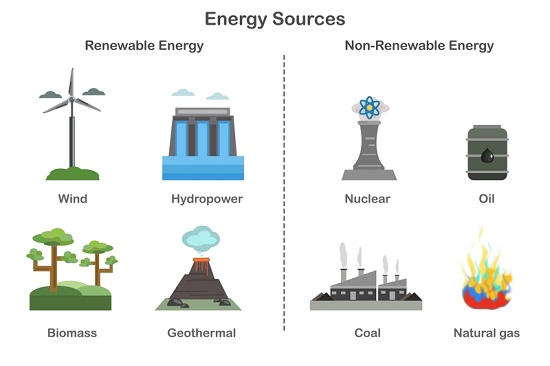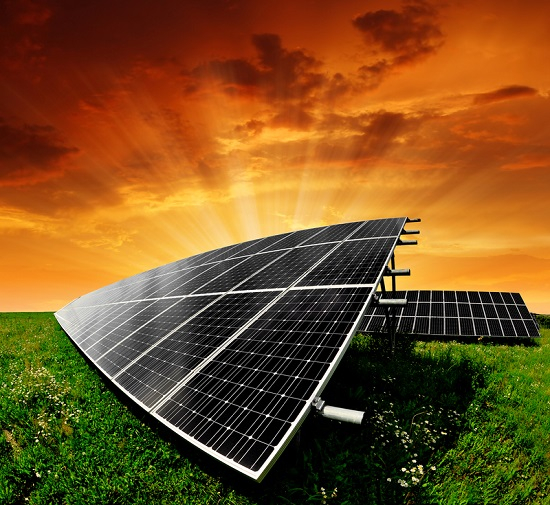Atoms
Celestial Bodies
- Space Travel Equipment
- Stars
- Rotation and Revolution
- Relation Between Escape Velocity And Orbital Velocity
- Dwarf Planets
- Difference Between Solar Eclipse And Lunar Eclipse
- Difference Between Equinox And Solstice
- The Escape Velocity Of Earth
- Solar System
- Difference Between Stars And Planets
- Difference Between Asteroid And Meteoroid
- Constellations
Circuits
电路 (diàn lù)
电路 (Diànlù)
电路
通信系统Pdf
二极管
地球科学
电荷
电
- 类型的齿轮
- 电子产品在日常生活中
- 类型的汽车
- 类型的直流电机
- 类型的交流电机
- 晶体管工作
- 转矩电流环
- 电动机
- 电阻温度依赖性
- Rms值交流电
- 电抗和阻抗
- 相量表示法交流
- 平行板电容器
- 焦耳定律
- 电力
- 磁场对载流导线的影响
- 电流密度
- 导体绝缘体
- 导电
- 碳电阻器
- 直流发电机
- 类型的发电机
- 类型的电流
- 直流发电机类型
- Torque On Dipole
- 电流的热效应
- 电动发电机
- 静电
- 电阻率不同的材料
- 电场的物理意义
- 介电常数和磁导率
- 电能和权力
- 电流在导体
- 电动汽车
- 位移电流
- 电阻与电阻率之间的差异
- 电动机和发电机之间的区别
- 接地和接地之间的区别
- 电流线圈
- 水的电导率
- 导电的液体
Electricity
电磁波
电磁
静电学
能量
- 能量
- 能源类型
- 热能
- 太阳能项目
- 太阳能汽车
- Ev和Joule之间的关系
- 动能和完成的功
- 能量转换
- 一维和二维的弹性和非弹性碰撞
- 常规能源和非常规能源
- 太阳能炊具
- 潮汐能
- 能源
- 太阳能和光伏电池
- 动能与动量的关系
- 热量与焦耳的关系
- 能源及其对环境的影响
- 能源考虑
流体
武力
Force
摩擦
万有引力
热
动力学理论
光
- 镜面反射漫反射
- 人眼
- 结构人眼功能
- 阴影的形成
- 反射和折射之间的区别
- 相干源
- 光的透射、吸收和反射
- 透明半透明和不透明
- 阳光白色
- 单狭缝衍射
- 拉曼散射
- 粒子自然光光子
- 真实图像与虚拟图像的区别
- 衍射和干涉的区别
磁性
运动
- 运输历史记录
- 速度-时间图
- 旋转动能
- 刚体和刚体动力学
- 扭矩和速度之间的关系
- 粒子的直线运动
- 周期性运动
- 动量和惯性之间的差异
- 动量守恒
- 运动测量类型
- 扭矩
- 慢速和快速运动
- 滚动
- 刚体平移运动和旋转运动
- 相对速度
- 径向加速度
- 速度和速度之间的区别
- 动力学和运动学的区别
- 连续性方程
- 线性动量守恒
自然资源
核物理学
光学
Optics
- Reflection of Light and Laws of Reflection
- Concave Lens
- Total Internal Reflection
- Thin Lens Formula For Concave And Convex Lenses
- Spherical Mirror Formula
- Resolving Power Of Microscopes And Telescopes
- Refractive Index
- Refraction Of Light
- Refraction Light Glass Prism
- Reflection On A Plane Mirror
- Reflection Lateral Inversion
- Rainbow
- Photometry
- Difference Between Simple And Compound Microscope
- Difference Between Light Microscope And Electron Microscope
- Concave Convex Mirror
- Toric Lens
- The Lens Makers Formula
- Simple Microscope
Oscillation
Pressure
- Thrust Pressure
- Relation Between Bar And Pascal
- Regelation
- Sphygmomanometer
- Relation Between Bar And Atm
- Difference Between Stress And Pressure
Quantum physics
- Quantum physics
- Rydberg Constant
- Electron Spin
- Casimir Effect
- Relativity
- Quantum Mechanics
- Electrons And Photons
Radioactivity
- Relation Between Beta And Gamma Function
- Radioactivity Beta Decay
- Radioactive Decay
- Stefan Boltzmann Constant
- Radioactivity Gamma Decay
- Radioactivity Alpha Decay
- Radiation Detector
Scalars and Vectors
- Scalars and Vectors
- Triangle Law Of Vector Addition
- Scalar Product
- Scalar And Vector Products
- Difference Between Scalar And Vector
Scientific Method
- Scientific Methods
- Safety Measures Technology
- Difference Between Science And Technology
- Scientific Investigation
Semiconductors
- Semiconductor Devices
- Junction Transistor
- Semiconductor Diode
- Difference Between Npn And Pnp Transistor
Solid Deformation
- Solid State Physics
- Solid Deformation
- Stress
- Shear Modulus Elastic Moduli
- Relation Between Elastic Constants
- Elastic Behavior Of Solids
- Tensile Stress
- Stress And Strain
- Shearing Stress
- Elastomers
- Elastic Behaviour Of Materials
- Bulk Modulus Of Elasticity Definition Formula
Sound
- Sound waves
- Timbre
- Speed Of Sound Propagation
- Sound Waves Need Medium Propagation
- Sound Reflection
- Sound Produced Humans
- Doppler Shift
- Difference Between Sound Noise Music
- The Human Voice How Do Humans Create Sound With Their Vocal Cord
- Sound Vibration Propagation Of Sound
- Sound Produced Vibration Object
- Reverberation
- Doppler Effect
System of Particles and Rotational Dynamics
Thermal Properties of Matter
- Thermal Properties of Materials
- Thermal Stress
- Thermal Expansion Of Solids
- Thermal Conductivity Of Metals
Thermodynamics
- Statistical Physics
- SI Units List
- Statistical Mechanics
- Reversible Irreversible Processes
- Carnots Theorem
- Temperature
- Kelvin Planck Statement
- Difference between Isothermal and Adiabatic Processes
Units and measurements
- Density of Air
- The Idea Of Time
- Difference Between Pound And Kilogram
- Difference Between Mass And Volume
- Dimensional Analysis
- Density Of Water
- Time Measurement
- Standard Measurement Units
- Relation Between Kg And Newton
- Relation Between Density And Temperature
- Difference Between Mass And Weight
Waves
- Space Wave Propagation
- Sharpness Of Resonance
- Relation Between Group Velocity And Phase Velocity
- Relation Between Amplitude And Frequency
- Periodic Function
- P Wave
- Destructive Interference
- Transverse Waves
- Travelling Wave
- Standing Wave Normal Mode
- S Waves
- Relation Between Frequency And Velocity
- Reflection Of Waves
- Phase Angle
- Period Angular Frequency
Work, Energy and Power
- Derivation Of Work Energy Theorem
- Conservation Of Mechanical Energy
- Relation Between Work And Energy
- Destruction Caused Cyclones
Physics Experiments
- Determine Resistance Plotting Graph Potential Difference versus Current
- To find the weight of a given Body using Parallelogram Law of Vectors
- To study the variation in volume with pressure for a sample of air at constant temperature by plotting graphs between p and v
- To measure the thickness of sheet using Screw Gauge
- To find the value of V for different U values of Concave Mirror find Focal Length
- To find the Surface Tension of Water by Capillary Rise Method
- To find the Resistance of given wire using Metre Bridge and hence determine the Resistivity of its Material Experiment
- Determine Mass of Two Different Objects Using Beam Balance
- Tracing the path of the rays of light through a glass Prism
- Tracing path of a ray of light passing through a glass slab
- Tornado Bottle
- To find image distance for varying object distances of a convex lens with ray diagrams
- To find force constant of helical spring by plotting a graph between load and extension
- To find focal length of concave lens using convex lens
- To find effective length of seconds pendulum using graph
- To find downward force along inclined plane on a roller due to gravitational pull of the earth and its relationship with the angle of inclination
- To draw the IV characteristic curve for p n junction in forward and reverse bias
- To determine Young’s modulus of elasticity of the material of a given wire
- To determine the internal resistance of a given primary cell using a potentiometer experiment
- To determine the coefficient of viscosity of given viscous liquid by measuring terminal velocity of given spherical body
- To determine specific heat capacity of given solid by method of mixtures
- To determine radius of curvature of a given spherical surface by a Spherometer
- Scope and Excitement of Physics
- Rocket science
- Relationship between frequency and length of wire under constant tension using Sonometer
- To determine equivalent resistance of resistors when connected in series and in parallel
- To convert the given galvanometer of known resistance and figure of merit into a voltmeter of desired range and to verify the same experiment
- To determine minimum deviation for given prism by plotting graph between angle of incidence and angle of deviation
- To compare the emf of two given primary cells using potentiometer experiment
Introduction
随着快速发展和现代化,对丰富的低成本能源的需求正在急剧增长。为了满足这些能源需求,人类以各种方式开采能源。尽管在这一过程中采用的各种技术和程序对环境产生了积极影响,但负面影响的危害要大得多,对社会的可持续发展至关重要。
What is an Energy Resource?
顾名思义,能源可以定义为一种自然资源,既可以作为能源,也可以通过人为干预转化为其他形式的能源,以满足能源需求。例如,燃煤电厂通过燃烧煤炭(一种自然资源)发电。同样,太阳的热能可以在太阳能电池的帮助下转化为电能。
Need for Energy Resources
能源广泛应用于农业、交通运输、信息技术和工业生产。这些能源资源通过满足我们的日常能源需求,成为世界的支柱。此外,这些是人类生存的主要来源。
Types of Energy Resources
能源资源可以根据以下参数进行分类:
基于传统用途:常规和非常规能源。
基于长期可用性:可再生和不可再生能源。

Figure: 1 Classification of energy resources
Conventional and Non-Conventional Sources of Energy
传统能源是我们已经使用了很长时间的能源。例如,燃烧煤炭、木材等。
非常规能源是指新发现的能源。例如风能、太阳能等。
Renewable and Non-Renewable Sources of Energy

Renewable sources of energy are those sources that can be renewed naturally over time. Some of the common examples are discussed below -
Solar Energy
热量形式的能量直接来自太阳(取之不尽用之不竭)。使用太阳能的优点包括其永不停息的供应和无污染的特性。然而,尽管它在自然界中大量存在,但其高昂的设置、转换和收集成本使其在许多地方难以开采。

Hydro Energy
大坝中储存的水可以用来发电。水通过水循环过程自然更新,使其成为可再生能源。水力发电是一致的,因为它每天晚上都有,这比只能在白天利用的太阳能非常有利。

不可再生能源是指那些曾经使用过且无法再次更新的能源。下面讨论一些常见的例子:
化石燃料:煤炭和石油等化石燃料被广泛用于能源生产。化石燃料提供了工业发达国家80%以上的能源需求,因此化石燃料被大规模开采。化石燃料的燃烧会产生二氧化碳,这对人类和环境都有害。
核能:铀被用作核能发电的燃料。核能比其他不可再生能源更有优势。它为我们提供了无碳电力,这对环境有益,并在更少的土地上产生更多的能源。更重要的是,它产生的废物最少。
What are Environmental Impacts?
任何自然资源,无论是可再生的还是不可再生的,都是为了利用其中的目的性能源而开发的。环境影响可以定义为在开发自然资源过程中产生的任何新产品或过程,直接或间接地影响环境。这些影响可以是积极的,也可以是消极的。
Impacts of Energy Resources on the Environment
能源对环境的影响对自然要么有益,要么有害。各种能源的积极和消极影响如下所述:
Positive and Negative Impacts of Renewable Sources of Energy
Positive Impacts
减少温室气体和碳排放:太阳能电池板不需要燃烧化石燃料来发电。因此,我们可以获得无碳能源,从而防止全球变暖。
减少空气污染:太阳能不涉及燃烧任何化石燃料,如煤炭、石油等,这些燃料会对环境产生有害气体,如二氧化硫和一氧化碳,对人类有害。
无燃料能源:涡轮机的叶片在风力的作用下旋转,风力反过来驱动发电机发电。因此,在这个过程中不需要燃料。
Negative Impacts
栖息地丧失:为了大量发电,需要大量土地来安装太阳能发电场。因此,该地区的大片土地和植被都被清除了。
接触有害物质:在许多光伏电池的制造过程中,有害化学物质被用于清洁半导体表面。制造区的工人接触到这些对他们的健康有害的化学物质。
风力涡轮机对野生动物的威胁:风力涡轮机威胁到该地区的鸟类和其他飞行生物。
Positive and Negative Impacts of Non-Renewable Sources of Energy
Positive Impacts
易于储存-大多数不可再生能源都可以很容易地储存,因此可以长期使用。
经济发展-石油、煤炭和天然气的生产及其运输为国家带来了大量利润。因此,有助于经济发展。
创造就业机会-在开采、运输和提炼不可再生资源方面创造了大量就业机会。
Negative Impacts
环境不友好-使用不可再生能源,特别是煤炭和石油等化石燃料,在燃烧时会产生大量有害气体,如二氧化碳、一氧化碳、二氧化硫等。
不可持续-不可再生能源的使用正在以惊人的速度使环境退化。如果这种趋势继续下去,我们的后代将很难生存下去。
不可降解副产品-燃烧化石燃料后产生的副产品是不可降解的,因此会污染环境。
| Renewable Sources | Impacts | Magnitude |
|---|---|---|
Solar energy | Toxins | Minor - Major |
Wind Energy | Bird strike Noise | Minor |
Hydro Energy | Displacement, Agriculture and River damage | Minor - Major |
Table 1: Negative impacts of renewable sources of energy.
| Non-Renewable Sources | Impacts | Magnitude |
|---|---|---|
Coal | Human deaths, Greenhouse gas emissions. | Major |
Petroleum | Human deaths, Greenhouse gas emissions. | Major |
Natural Gas | Human deaths, Greenhouse gas emissions. | Minor - Major |
Table 2: Negative impacts of non-renewable sources of energy.
Conclusion
能源在我们的日常生活中发挥着至关重要的作用,因为它们是我们生存所必需的。汽车、自行车和火车的使用之所以可能,是因为这些能源资源。然而,这些资源的使用在许多方面影响着环境和生活在其中的人们。尽管有些影响是积极的,但主要令人担忧的是,消极影响的危害远大于积极影响。因此,有必要实现可持续发展。
FAQs
问题1.你对“资源的可持续利用”的理解是什么
答:考虑到子孙后代的需求,利用自然资源进行当前的发展被称为可持续利用。
Q2.天然气是如何比煤炭更好的燃料
答:与煤炭相比,天然气燃烧释放的排放量减少了50%。因此,作为更好的燃料。
Q3.计算25公斤煤炭燃烧时释放的能量
答:燃烧1公斤燃料时,释放的能量为3×10<sup>7</sup>焦耳。例如,25kg燃料25×3×107=75×107焦耳。
Q4.铀是如何产生最佳能源的
答:铀为我们提供了无碳能源。此外,1公斤铀的发电量为24000000千瓦时。
问题5.保护不可再生能源的方法是什么
答:主要转向使用太阳能、风能和水能等可再生能源是一个最佳解决方案。
